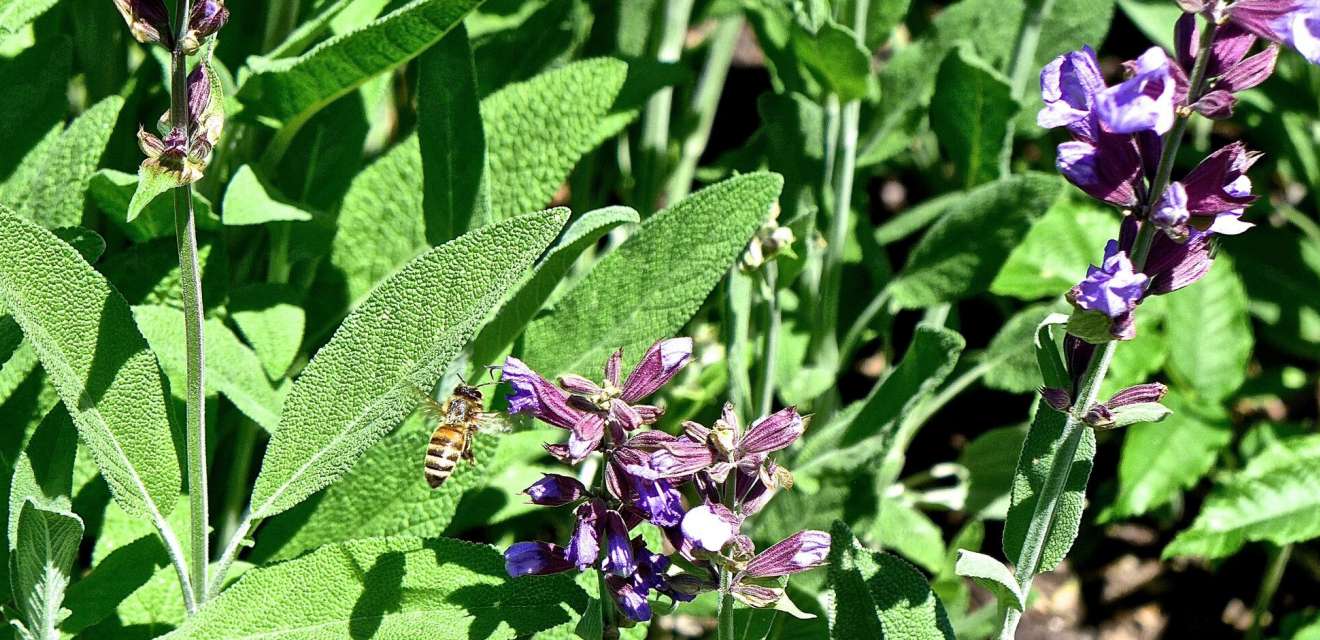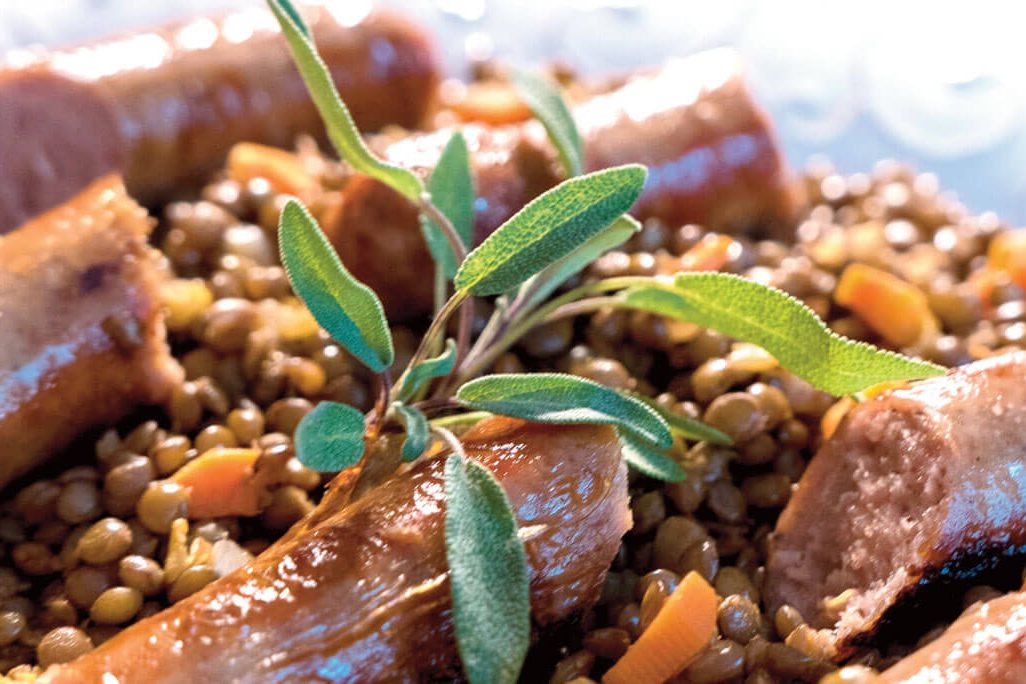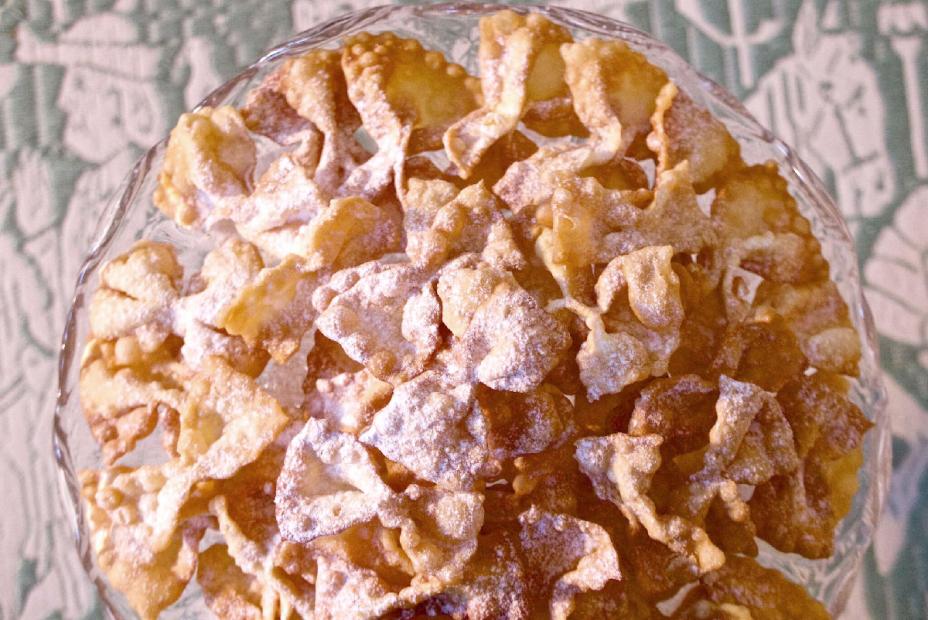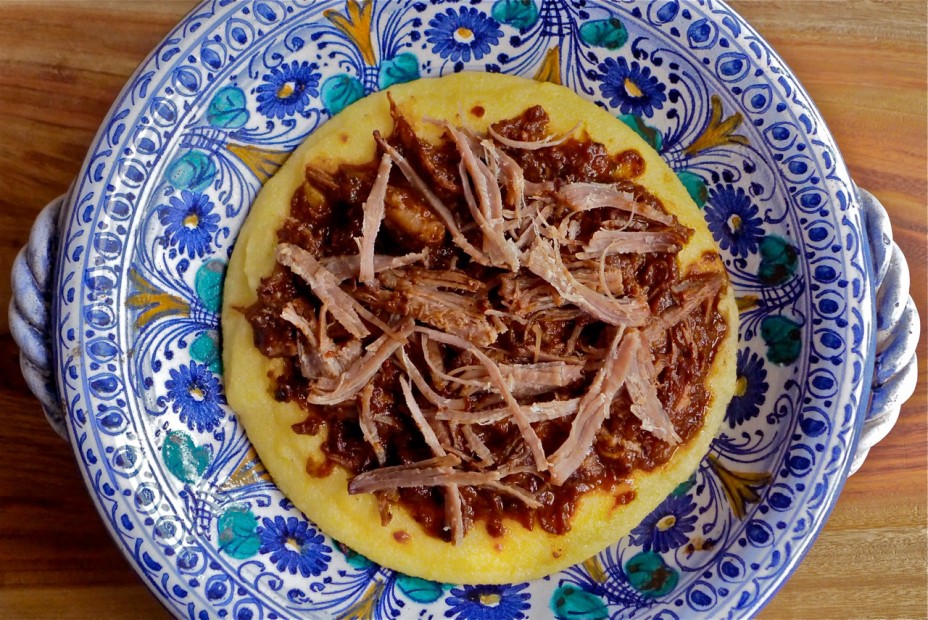Why on earth do we in America think sage is for sausages or Thanksgiving stuffing and, basta!? Ask me and I will tell you that sage is for summer — to make a protective and aromatic bed for fish on the grill, branches and all; for a sultry boost to a salad of warm cannellini, thin-sliced green onions and golden oil; or best of all, an excuse for sage leaf frittelle, the addictive batter-fried delicacies of Friuli. There they are called salviada, and the locals might tell you that your batter must include eggs, and maybe even sugar. My first taste of the sage fritters, many years ago, was at the table of a Friulano friend. While we chatted on the balcony, his American wife dipped sage leaves she had picked in her garden into a thin batter of nothing more than flour and tap water before slipping them into hot oil. I will never forget how addictive they were. I look forward to summer every year when I can make these beautiful crisps from my own garden sage.
If you are among those who find the herb musty, you will discover that it loses its pungency, but not its flavor, once fried. The little fritters are so delicious and nearly foolproof to make. Serve them as an appetizer, or for a snack or side dish with dinner; guests invariably never forget them. My own version, after much practice, requires a splash of sparkling water for the best crunch.
Batter-Fried Sage Leaves
Serves 4 for an appetizer
• grape-seed, safflower, or another vegetable oil with a high smoking point for frying
• ½ cup unbleached, all-purpose unbleached flour
• 12 tablespoons sparkling mineral water or seltzer water
• 30 or more large sage leaves with about 1 inch of stem left intact
• sea salt
1. Fill a deep skillet or frying pan with enough oil to reach about 1 inch up the sides. Warm over medium heat until the oil is hot enough to make a sage leaf sizzle when dropped in.
2. In the meantime, put the flour into a mixing bowl large enough to accommodate a few leaves at a time. Pour in the sparkling water and mix with a whisk until the mixture is blended and smooth. It should have the consistency of beaten egg and easily coat a spoon. If the mixture is too thick, thin with a little more of the water.
3. Wash the leaves under cold running water and dry them gently on paper towels. Dip each into the batter just before you are ready to cook them, using the stem as a handle for slipping them into the pan. Put only as many leaves into the oil as can fit without crowding. Fry until golden, about 1 minute altogether, turning them over midway during cooking. Use a skimmer to retrieve them when they are done. Transfer to paper towels, taking care not to spread the flowers to avoid crushing them. Sprinkle them with the salt immediately to ensure it will stick and keep them crisp. Follow the same procedure for frying and salting the remaining sage leaves, only frying them about 1 minute. Serve at once.
Julia della Croce is a food writer and James Beard award-winning cookbook author and recipe developer based in New York. She is presently incubating a book about her family’s ancestral region, Sardegna. Visit her website, www.juliadellacroce.com and blog, http://juliadellacroce.com/forktales1/, connect on Facebook: Julia della Croce – chef & foodwriter, Twitter: @juliadellacroce and Instagram: juliadellacroce.































